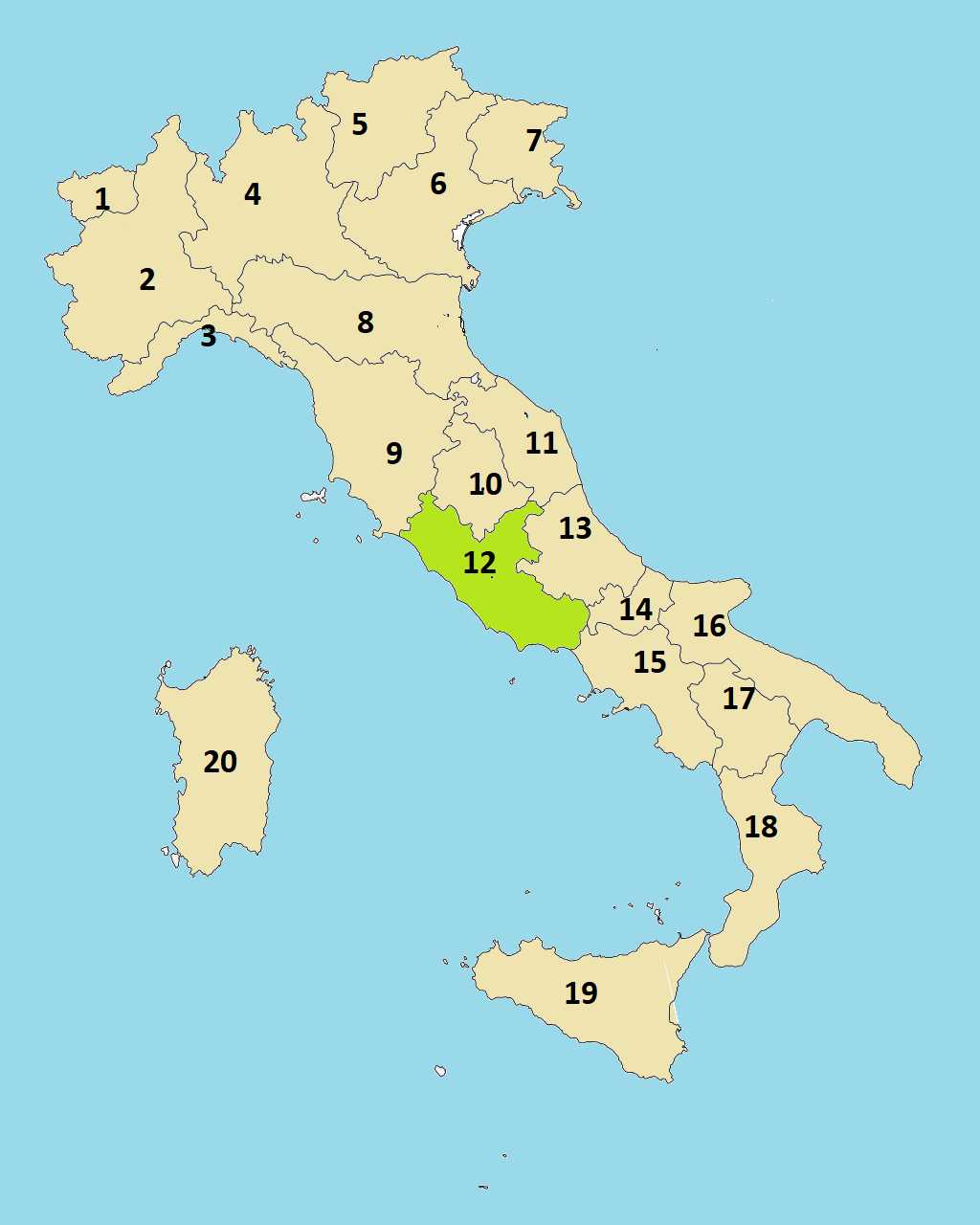
| 1. Alps and cheese with a French flavour |
| 2. Known for wine, truffles, chocolate... and cars |
| 3. Christopher Columbus and pesto |
| 4. Italy's most populous (and fashionable) region |
| 5. Mountains and lakes to die for in a bilingual setting |
| 6. William Shakespeare's favourite Italian region |
| 7. Great wine region bordering Austria and Slovenia |
| 8. Parmesan, prosciutto, and the oldest university in the Western world |
| 9. Renaissance art, picture-perfect landscapes, and some of the world's best steaks |
| 10. The green heart of Italy, and the birthplace of great saints |
| 11. The great Renaissance painter Raphael was born in this Adriatic region |
| 12. A capital idea - also the name of a soccer team |
| 13. Alan Alda's real name, and a must for lamb fans |
| 14. Second-smallest and most recent Italian region |
| 15. Amalfi Coast and pizza |
| 16. The heel of the boot, famous for wine and olive oil |
| 17. Its name might remind you of a church or a herb |
| 18. Beautiful beaches, rugged mountains, and chili peppers |
| 19. Sun, volcanoes, and cannoli |
| 20. Plenty of sheep and the Emerald Coast |